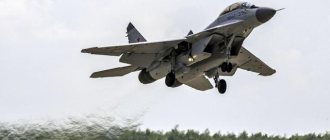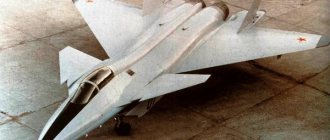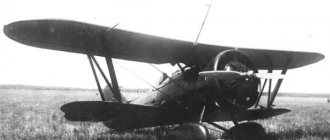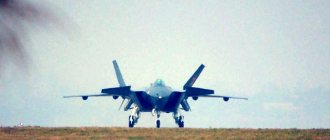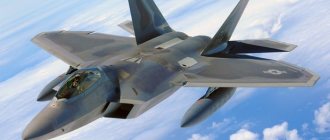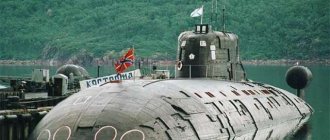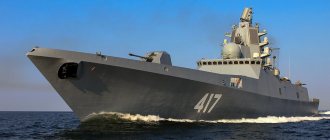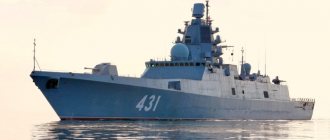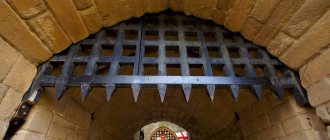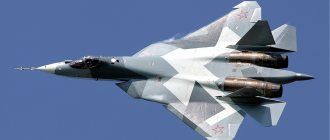On September 29, 1990, the YF-22, a prototype of the world's first fifth-generation serial fighter, the F-22 Raptor, took to the skies for the first time. In 2005, this vehicle was officially adopted by the American army and is still in operation. Thanks to the Raptor and the F-35 Lightning II multi-role fighter-bomber, the United States is currently the only country in the world that has fifth-generation fighters in its arsenal. Work on the creation of similar combat vehicles is currently underway in Russia, China, India, Japan...
Less known is the fact that the USSR had its own project to create fifth-generation aircraft, and domestic aircraft designers were even slightly ahead of their overseas colleagues. The result of the Soviet program was the MiG 1.44 MFI, a prototype multirole front-line fighter that first took to the skies in 2000. The development of this machine was carried out by specialists from the Mikoyan design bureau. After the start of mass production, the fighter was to receive the designation MiG-35. However, this project was never brought to the final stage - at the beginning of the 2000s, a decision was made to create the T-50 (Su-57), the lead developer of which was the Design Bureau named after. Sukhoi.
The MiG 1.44 aircraft was created as a response to the American program; in a number of characteristics it even surpassed the F-22. The design of the aircraft made extensive use of technologies to reduce visibility; the MiG 1.44 fighter was planned to be equipped with engines with controlled thrust vectoring. The IFI program involved the creation of a number of aircraft: a reconnaissance aircraft, an interceptor fighter and a carrier-based aircraft.
In general, the MiG 1.44 can confidently be called another victim of the collapse of the USSR. In the early 90s, designers simply could not find funds to continue a very interesting, but at the same time extremely expensive project. Another reason for the closure of the program was the behind-the-scenes games and fierce confrontation between design bureaus, which was very harmful to the business...
It is curious that the Chinese fifth-generation fighter J-20, recently adopted by the PLA, is very similar to the Soviet-Russian MiG 1.44. Some experts explain this similarity by the fact that after the closure of the IFI program, part of the developments on it were transferred to the Middle Kingdom.
History of the development of the fifth generation fighter MiG 1.44
At the moment, the armies of the world use 4th generation fighters. Serial production of more advanced 5th generation machines has been established only in the United States, but there is already talk about devices of a new class.
MiG 1.44 MFI, front view
Few people know that 5th generation fighters were developed in the Soviet Union even before the construction of the first F-22 Raptor, which the Americans use. If the American aircraft (aircraft) began to be developed in the 80s, then the Soviet combat vehicle appeared on paper in the late 70s at the Design Bureau named after. Mikoyan. Fighter index - MiG 1.44 MFI. The first assembled copy took off in 2000.
The power plant was based on new engines with variable thrust vectoring. The design used innovative solutions that reduce radar signature; it was also planned to integrate the latest electronics and equip the new product with advanced weapons.
It all ended with one assembled new MiG of the 5th generation, since priority was given to the PAK FA machine at the Design Bureau named after. Sukhoi. Thus, since 2002, 1.44 has been forgotten.
Historically, the MiG was a response to the appearance of the Raptor. Experts emphasize that some characteristics of the Russian car were an order of magnitude higher than the American one.
MiG 1.44 MFI, cockpit, outside view
The development began with the formulation of three principles that the new project had to meet:
- secrecy;
- cruising speed must be supersonic;
- special attention was paid to maneuverability, which had to be at the highest level.
Since the American project ATF (Advanced Tactical Fighter) was already known at the time of the creation of the MiG, the initiative was supported by the Central Committee, and a corresponding resolution of the Council of Ministers was issued.
In 1979 OKB im. Mikoyan began work, the project was named I-90, it was previously decided that it would replace the Su-27 and MiG-31. It was planned to equip the aircraft with the most advanced electronic systems. The device was supposed to be multifunctional, in particular, to hit both ground and air targets.
The program for the new aircraft was created and approved in 1983, requirements were formulated for the following parameters:
- Power point;
- On-board electronics.
The document also clarified the requirements from the country's Air Force and Air Defense.
MiG 1.44 MFI, profile
It was difficult to implement the set of requirements, so research work began. The result was a design that was significantly different from the 4th generation of fighters, which entered service at the same time as the development of the new product.
Su-57
Many people call the Su-57 by its factory code T-50 or by the name of the program - PAK FA. After passing the first stage of state tests, it will continue to be refined, while at the same time beginning full-fledged official use. In addition, special recommendations will be created for designers and personnel.
Su-57 (photo: Lebedev Sergey)
Ten Su-57 prototypes are currently flying. Plans for 2022 include ordering the first production batch of a dozen vehicles. From 2022, they will be immediately sent to the troops.
How are things going with new products abroad?
Fighter design
Some of the solutions were selected on the basis of existing experience, and developments on fourth-generation fighters were used. However, the usual forms were subject to changes. Thus, the wing surge that the Su-27 and MiG-29 had was removed. The resulting sample had common features with the MiG-25, which was distinguished by very high speed qualities.
MiG 1.44 MFI, diagram
The designers used a “duck” design, which is characterized by close placement of the engines. This choice made it possible to obtain improved characteristics of maneuverability, strength, and load capacity.
Power point
The 5th generation MiG fighter is equipped with two AL-41F turbojet engines, dual-circuit, with an afterburner. Variable thrust vectoring arrangements were used, which improved maneuvering characteristics and takeoff performance. The air intakes were located under the fuselage, which had a positive effect on radar invisibility.
At the initial stages of creating the machine, engineers leaned towards using engines with flat nozzles. This made it possible to create an effective screen for the turbines, as well as reduce visibility to the enemy.
Flat nozzles had to be abandoned, since the technology of that time did not allow the transition from round engine nozzles to rectangular ones. When knocking, the walls could quickly burn out due to inadequate distribution of temperature fields.
MiG 1.44 MFI engines
During the search for solutions, controlled thrust vector schemes were developed. This technology was applied in 1991, after which they were immediately included in the finished circuit of the machine.
Fuselage
A large percentage of composite materials were used in the design, their share reaches 30%. As aviation parts, they are inconvenient due to the complexity of integration and fastening with the main structure. If they break down, they cannot be repaired; entire units have to be replaced completely.
Most of the fuselage consists of metals:
- aluminum alloys – 35%;
- steel and titanium – 30%.
The location of the air intake under the fuselage has been chosen: it is divided into two sections, one for each engine.
MiG 1.44 MFI, rear view
It was supposed to include in the general scheme means for refueling in the air.
Structurally, 7 control planes are provided; a digital fly-by-wire control system is used for control.
In its finished form, the surfaces of the aircraft were supposed to be treated with a special coating to reduce radar signature to a minimum. Presumably, it was possible to achieve an effective dispersion area of 0.3 m2.
Keels were used that had an outward camber of 15 degrees. This is also intended to improve the aircraft's stealth.
Chassis
The chassis is three-post, one wheel is located in the bow. Two struts under the wings fold forward, each with one wheel. The front pillar folds back and has two wheels.
MiG 1.44 MFI on the runway
Airplane wings
There is no sag on the leading edge; it is straight, which was the main difference from the previous generation fighter models. The aerodynamic forces arising in flight were studied in detail. For example, vortices arising at the leading edge of the new design improved the stability of the machine, and at large angles they did not cause stalls. Vortexes appeared due to the beams of the front horizontal tail (PGO). Their position was selected experimentally to achieve optimal characteristics.
We had to analyze a whole range of characteristics:
- position of the beams relative to the horizontal plane;
- height relative to the wing plane;
- excess relative to the leading edge of the wing.
It was possible to achieve optimal flow drift and vortex shedding, due to which an aerodynamic profile was formed.
MiG 1.44 MFI at the exhibition
The wing design is adaptive, that is, it changes depending on the flight mode. Changes are made to flaperons and toes, which may deviate.
It was possible to achieve an increase in maneuvering characteristics by installing a vortex-generating tooth on the edge of the PGO. A similar solution has already shown its worth during the modernization of the MiG-23.
The area of the final structure was small, the deflection angle was within 40-45 degrees.
Armament
The vehicle's armament also had to be rearranged compared to fighters of that time. Initially, it was proposed to install compartments in the upper part of the fuselage that would open before launching the rocket. This would make it easier to launch against targets flying above the aircraft, as well as when maneuvering with high overloads.
It was necessary to abandon this provision and use classic niches under the wings due to the need to use new means of transportation and install missiles when equipping the fighter. It was necessary to develop a new principle with cranes and carts to load 300-400 kg rockets. The final position allowed the use of ordinary trolleys and simple means for lifting loads.
Engineers were going to install an innovative radar system on the 5th generation MiG, which was based on many independent emitters that had an area of several cm2. This arrangement provided increased protection from mechanical damage.
Another innovative solution was the placement of the radar in the rear part, which made it possible to detect the enemy in the rear hemisphere and indicate targets to missiles, in particular during a reverse launch.
MiG 1.44 MFI in testing
As a result, it was planned to install an aircraft 30-mm cannon on board, as well as missiles inside the hull on ejection mounts.
Performance characteristics
Many solutions were not tested in practice on a prototype, since this was not possible with one single sample. For example, the radar coating was never applied to the aircraft during testing.
| Characteristic: | Meaning: |
| Crew, people | 1 |
| Length, m | 17,3 |
| Wingspan, m | 11,99 |
| Height, m | 4,73 |
| Weight, t (empty/take-off) | 18/23,5 |
| Afterburner thrust, kgf | 18000Х2 |
| Maximum speed at altitude, km/h | 3210 |
| Maximum ground speed, km/h | 1500 |
| Range without refueling, km | 4000 |
| Maximum lift height, km | 20 |
| Combat load, t | 12 |
The parameters could change, for example, depending on the set of weapons. So, the machine was supposed to use several basic circuits.
To defeat the enemy in the air - 12 × R-77 or R-73. To combat ground targets:
- 2 × X-55, X-61, X-41;
- 8 × X-29, X-31;
- 12 × KAB-500, ODAB-500.
Special built-in containers were used to accommodate weapons. There are several suspension points: 12 inside the body, 8 on the outside.
F-22 (USA)
The pride of the American aviation industry, as well as film and game makers.
This is the only fully developed fifth-generation fighter in the world, significantly superior to its predecessors in all characteristics.
Increased cruising speed and flight altitude, low visibility and a powerful radar with a set of passive detection means give the F-22 significant superiority in long-range missile combat.
F-22A Raptor (photo: Rob Tabor)
Of course, this is not an ideal fighter - it still has not been equipped with a helmet-mounted sight, there is no optical-location station, and the shallow weapons compartments limit the choice of weapons for “work on the ground.”
It was produced until the end of 2011. A total of 195 units were produced, including prototypes. Then they wanted to resume development, but considered it inappropriate. Export was banned by a separate law - secrecy!
The F-22 was the only fighter mentioned in the article that took part in combat - in recent years it has occasionally bombed in Syria and Afghanistan.
Advantages and disadvantages of a fighter
Among the advantages of the innovative vehicle, one can highlight the greater automation of combat, which was first put into practice by Soviet engineers. It was assumed that the bulk of the missiles would operate without pilot control after launch.
The main disadvantage of the MFI, which also influenced the fate of the unique machine, was its high cost. The development of a new fighter is too expensive, even on a national scale, because during the collapse of the Soviet Union there was simply no money left for financing.
KF-X (South Korea)
There are a lot of Asians on this list. What to do, since old Europe has become decrepit and cannot keep up the pace of the arms race. So the Koreans are not going to lag behind the Chinese and Japanese. Their plans are quite specific - they are already planning to begin deliveries in the middle of the next decade.
True, so far they can only boast of mock-ups.
KF-X
The makings, by the way, are not bad. The Koreans have already found a partner and a promising large buyer - Indonesia. In addition to financial support, there is also moral support - from senior American comrades who are involved in the development.
With the naked eye you can see the influence of the same F-22 and F-35. It is possible that the Americans are planning to help the Koreans make a competitor for the Chinese FC-31 and receive a certain percentage of sales. But, since it is impossible to simultaneously create a competitor for the F-35 (which is being bought by Korea), this fighter will be simpler for customers.
Reason for stopping the project
There are two main versions of stopping the MiG 1.44 project. Moreover, there are controversial opinions regarding their fairness.
The project was reportedly closed due to:
- intrigues in the leadership ranks and the senior staff of engineers working on the machine;
- banal high cost and complexity of production.
A simple analysis shows that the second scenario is fairer. Money began flowing into the army in 2000, and the developments for the new aircraft have not gone away. It was necessary to update the fighter fleet, which was much easier and cheaper to do with the help of aircraft such as the Su-30, modernization of the MiG-29 and 31. The price of the finished MiG MFI was equal to $70 million, almost the same as the Raptor, while it still required establish a production base and mass production of modern composites.
F-35 (USA)
The most scandalous creation of the American military industry. He can boast that he has many more haters on the RuNet than Elon Musk - and this is not easy! In general, an understandable attitude towards the world’s most expensive military program of our time.
The F-35 challenges the sense of beauty and the idea of what a fighter should actually be. Critics blame it for its prohibitive cost and endless hardware problems. In addition, many of the declared technologies have not yet gone beyond the boundaries of laboratories, while the aircraft itself is already in full production.
F-35A Lightning II (photo: US Air Force)
It was produced in significantly larger quantities than the F-22. At the end of last year, more than 265 machines were already delivered to customers. And it would be nice for us to get the same number of Su-57s by the end of the next decade!
In 2022, it is planned to commission another 90, and from next year we will begin producing more than a hundred per year.
In addition to the United States, eight partner countries are involved in the creation of the aircraft. Three more purchased it through export.
At the moment, the flight and technical personnel are being trained and the vehicle is being finalized, but the US Air Force and Marine Corps have already announced initial operational readiness.
In addition to the States, F-35s fly in Norway, Italy, Israel and Japan.
